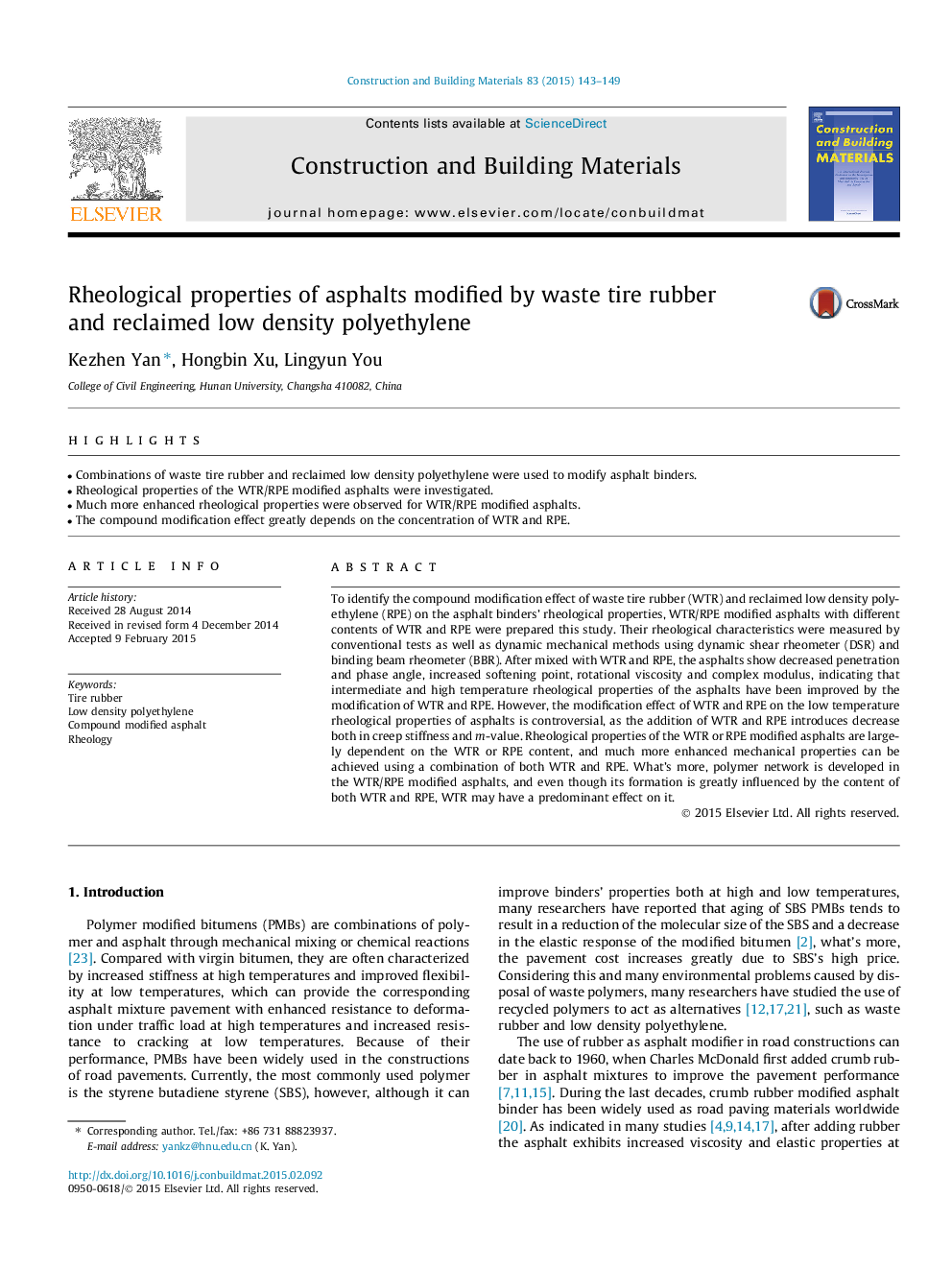| Article ID | Journal | Published Year | Pages | File Type |
|---|---|---|---|---|
| 6720928 | Construction and Building Materials | 2015 | 7 Pages |
Abstract
To identify the compound modification effect of waste tire rubber (WTR) and reclaimed low density polyethylene (RPE) on the asphalt binders' rheological properties, WTR/RPE modified asphalts with different contents of WTR and RPE were prepared this study. Their rheological characteristics were measured by conventional tests as well as dynamic mechanical methods using dynamic shear rheometer (DSR) and binding beam rheometer (BBR). After mixed with WTR and RPE, the asphalts show decreased penetration and phase angle, increased softening point, rotational viscosity and complex modulus, indicating that intermediate and high temperature rheological properties of the asphalts have been improved by the modification of WTR and RPE. However, the modification effect of WTR and RPE on the low temperature rheological properties of asphalts is controversial, as the addition of WTR and RPE introduces decrease both in creep stiffness and m-value. Rheological properties of the WTR or RPE modified asphalts are largely dependent on the WTR or RPE content, and much more enhanced mechanical properties can be achieved using a combination of both WTR and RPE. What's more, polymer network is developed in the WTR/RPE modified asphalts, and even though its formation is greatly influenced by the content of both WTR and RPE, WTR may have a predominant effect on it.
Related Topics
Physical Sciences and Engineering
Engineering
Civil and Structural Engineering
Authors
Kezhen Yan, Hongbin Xu, Lingyun You,
